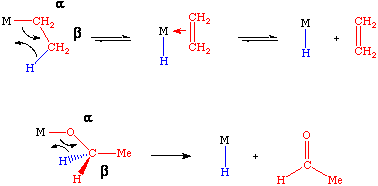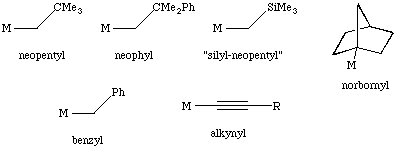
Beta-hydride elimination is a common reaction in organometallic chemistry. The reaction is simply the transfer of a hydride (hydrogen atom) from the beta-position on a ligand to the metal center. While most common in alkyl complexes, it is also observed with other ligands, one example being alkoxide ligands bound to late transition metal complexes:

The mechanism shown indicates a four-center transition state in which the hydride is transferred to the metal. In some cases, the unsaturated fragment that is formed will remain bound to the metal and in other cases it will either not bind or be displaced by a stronger donor ligand.
An important prerequisite for beta-hydride elimination is the presence of an open coordination site on the metal complex. If no open site is available, then it will be necessary to displace a ligand before the reaction can occur. In addition, the metal complex will usually have less than 18 electrons, otherwise a 20 electron olefin-hydride would be the immediate product.
The microscopic reverse of a beta-hydride elimination is called an olefin insertion reaction. In many systems there is a rapid, reversible equilibrium between the alkyl complex and the alkene-hydride that results from beta-elimination. Beta-elimination is a very important chain termination step in the polymerization of olefins, in the hydrozirconation reaction and in a variety of catalytic processes.
In order to prevent beta-elimination from taking place, one can use alkyls that:
A few of these are shown below:

While these approaches can successfully block beta-hydride elimination, the metal complex may still be able to undergo other intramolecular reactions such as alpha-elimination or delta elimination.